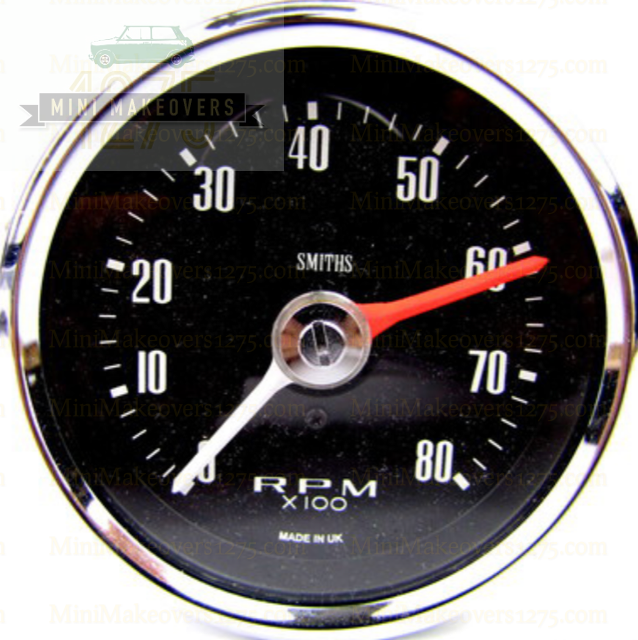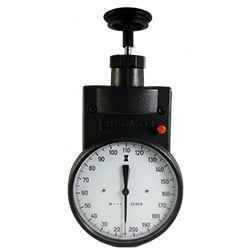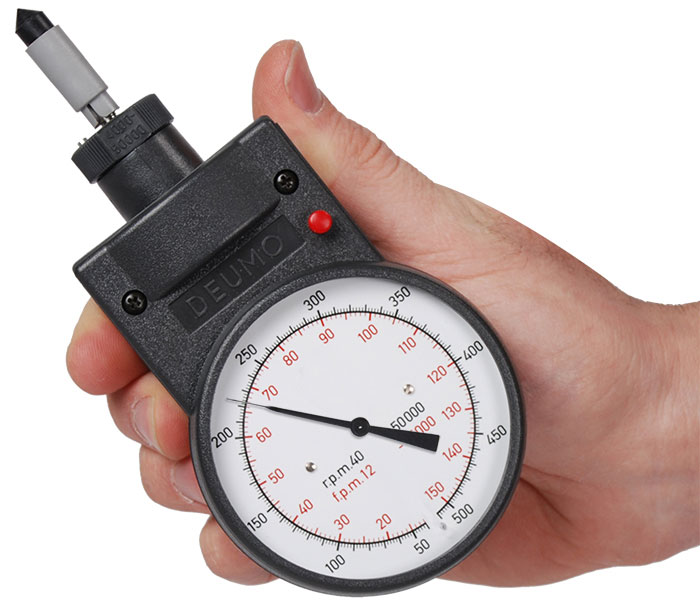Comprehensive Overview to Recognizing and Utilizing a Tachometer Successfully
Comprehensive Overview to Recognizing and Utilizing a Tachometer Successfully
Blog Article
The Value of a Tachometer in Keeping Track Of Engine Speed and Performance in Automotive Applications
In the realm of auto engineering, the tachometer stands as a critical tool in the motorist's collection, offering a straight home window right into the inner functions of a car's engine. Beyond its function as a plain gauge of revolutions per minute (RPM), the tachometer serves as an essential device for lovers and experts alike, providing real-time understandings right into engine performance and wellness.
Relevance of Checking Engine RPM
Keeping an eye on engine RPM, or transformations per min, is a vital facet of automobile maintenance and performance assessment. Engine RPM straight associates with the rate at which the engine's crankshaft turns, indicating how rapidly the engine is running - tachometer. By keeping an eye on RPM, auto mechanics can examine the health and wellness of the engine, discover prospective problems, and fine-tune performance. An abnormal RPM reading might signify troubles such as engine misfires, malfunctioning trigger plugs, or concerns with the fuel shipment system. Continually high RPM readings can show hostile driving behaviors or the need for a higher gear change to boost fuel performance.
Moreover, checking engine RPM is important for efficiency assessment in auto racing and high-performance cars. In summary, checking engine RPM is not just important for detecting issues however additionally for optimizing engine performance in different automobile applications.

Benefits of Real-Time Data
In automobile applications, real-time data plays an important role in offering instantaneous insights right into the performance and problem of the lorry. By continuously keeping an eye on various specifications such as engine speed, temperature level, gas usage, and more, real-time information supplies numerous benefits that add to boosted efficiency and safety and security when driving.
In addition, real-time data helps with efficiency optimization by providing immediate responses on driving practices and engine effectiveness. Motorists can adjust their actions in real-time based on this info to attain much better fuel economic situation and lengthen the life expectancy of their lorry.

Moreover, real-time information plays an important duty in modern-day automotive diagnostics, making it possible for specialists to swiftly identify and address breakdowns. This causes minimized downtime, reduced upkeep expenses, and inevitably, enhanced overall car dependability and longevity (tachometer). By harnessing the power of real-time information, automotive basics stakeholders can make educated decisions that positively influence both the performance and longevity of the vehicle
Impact on Equipment Shifts
Efficient gear changes in automobile applications considerably affect total efficiency and driving experience. The tachometer plays an essential duty in maximizing gear shifts by giving real-time engine speed data to the motorist. When coming close to the redline on the tachometer, it signals the vehicle driver to upshift to stop over-revving the engine and creating prospective damage. On the various other hand, downshifting at the appropriate moment can assist preserve the engine in its power band, making sure responsive acceleration when required.
Additionally, the tachometer aids in attaining smoother gear changes, specifically in hand-operated transmissions. By monitoring engine speed, motorists can carry out equipment changes at the optimal RPM variety, minimizing snagging motions and decreasing endure the transmission components. This precision in gear changes not only improves driving convenience yet also contributes to fuel performance.
Enhancing Gas Performance
Given the critical duty the tachometer plays in maximizing equipment shifts for efficiency and engine health and wellness, it directly adds to maximizing gas performance in automotive applications. By supplying real-time feedback on engine speed, the tachometer assists vehicle drivers in keeping one of the most effective RPM array for additional hints gas economy. When vehicle drivers consistently keep an eye on the tachometer and adjust their driving behaviors appropriately, they can avoid unneeded fuel intake caused by over-revving or hauling the engine.
Furthermore, the tachometer assists chauffeurs determine the most fuel-efficient gear to be in at any provided minute, avoiding the engine from functioning more challenging than needed. In final thought, the tachometer serves as an important device in improving gas efficiency by advertising optimum driving behaviors and recognizing areas for renovation in the lorry's performance.

Optimizing Engine Long Life
The tachometer's duty in monitoring engine rate and efficiency contributes in guaranteeing the long life of automotive engines. By making use of the tachometer properly, drivers can optimize engine durability with conscious RPM management. Constantly revving an engine expensive can bring about extreme wear and tear on vital parts, such as the pistons, valves, and bearings. Over time, this can lead to reduced engine performance and prospective breakdowns. Keeping track of the tachometer enables vehicle drivers to stay within the suggested RPM variety for their automobile, stopping unneeded stress on the engine and prolonging its life expectancy.

Verdict
Finally, the tachometer plays a critical role in keeping track of engine speed and efficiency in automotive applications. By giving real-time data on RPM, it allows for efficient equipment shifts, improved gas performance, and made best use of engine longevity. This tool is necessary for preserving optimum engine efficiency and guaranteeing the overall performance of an automobile.
Report this page